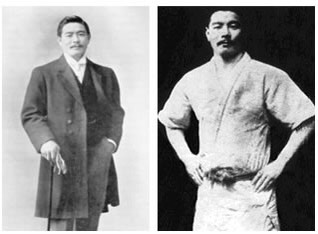Discover the Ancient Art of Jiu Jitsu: The Ultimate Mind-Body Discipline
- kasunjbaekho

- May 17, 2023
- 3 min read
Jiu-Jitsu, a martial art with roots in Japan, has evolved and spread globally simultaneously becoming renowned for its practicality, effectiveness, and emphasis on leverage and importance of technique. Let us dive into the historical journey, exploring the origins of jiu-jitsu and understanding the nature of this glorious martial art.
Unleashing the Ground Game: An Exciting Introduction to Brazilian Jiu-Jitsu
Jiu-Jitsu traces its origins back to feudal era of Japan, where samurai warriors educated themselves on effective means of combat both armed and unarmed. The techniques of jiu-jitsu were developed as a practical approach to defeating larger, more heavily armored opponents by utilizing a sequence of throws, joint locks, and immobilization techniques. The art was refined and passed down through generations, evolving into various schools also known as "Ryu", with each school specializing in their own unique education and techniques.

In the late 19th century, a pivotal event occurred that would shape the future of jiu-jitsu. Jigoro Kano, a Japanese martial artist, developed a new system called Judo, which aimed to incorporate the most effective techniques of various jiu-jitsu styles while emphasizing mutual respect, discipline, and personal development. Kano's Judo introduced a structured curriculum which included a progressive belt ranking system, and a focus on sportive competition.
The World of Jiu Jitsu Revealed
In the early 20th century, Mitsuyo Maeda, a master of traditional Japanese Judo and jiu-jitsu, traveled to Brazil. There, he met a member of the Gracie family, Carlos Gracie, who became his student. Carlos Gracie learned the techniques from Maeda and, along with his brothers, adapted and refined them to suit their smaller frames and leverage-based approach. This led to the birth of Brazilian Jiu-Jitsu (BJJ) which is now practised worldwide in both domestic and competitive platforms.
Maeda's Arrival in Brazil
In 1914, Mitsuyo Maeda arrived in Brazil, catching the attention of a young Brazilian named Carlos Gracie. Impressed by Maeda's abilities, Carlos became his student and devoted himself to learning the art. Carlos, along with his brothers, most notably Hélio Gracie, would go on to refine and adapt Jiu Jitsu to suit their own physical attributes and the realities of street fights in Brazil.
The Gracie family played a crucial role in transforming Jiu Jitsu into what we now know as Brazilian Jiu Jitsu. Emphasizing leverage, timing, and technique over brute strength, the Gracies developed a highly effective style that allowed smaller individuals to overcome larger opponents. The art became known as Gracie Jiu Jitsu and gained prominence as the Gracie family organized challenge matches and competed in open tournaments, showcasing its effectiveness.

Flowing Gracefully: The Fluidity of Jiu Jitsu
Brazilian Jiu-Jitsu, unlike most martial arts, places a strong emphasis on ground combat and submissions. It focuses on leveraging body positioning, joint manipulation, and chokes to neutralize and control opponents, regardless of their size or strength. BJJ practitioners often aim to take the fight to the ground, where they can utilize their technical skills to overcome adversaries through precision and strategy. Jiu Jitsu emphasizes on understanding the opponents tendecies and overpowering them using their physical characteristics against them. These principles have transformed this martial art form into a world renowned deadly technique.

The Global Surge of Brazilian Jiu Jitsu
Since its introduction, Brazilian Jiu-Jitsu has gained widespread recognition and popularity. This is largely due to the success of the Gracie family, who showcased the effectiveness of BJJ in open combat competitions, including the early Ultimate Fighting Championship (UFC) events. BJJ's dominance in these contests demonstrated the importance of ground combative skills and sparked a global interest in the art.
Conclusion
As a martial art with roots embedded in Japan, and later refined in Brazil, Jiu Jitsu has diversified into various styles and forms throughout its course of history. Regardless of the practise of traditional jiu-jitsu, Judo, or Brazilian Jiu-Jitsu, individuals are drawn to the art's effectiveness, technical gracefulness and the continuous pursuit of personal growth. As jiu-jitsu continues to grow and evolve, it remains a testament to the power of technique and leverage, offering valuable lessons in self-defense, discipline, and personal development for practitioners around the world.
"If you could use Jiu Jitsu to solve everyday problems, what would be your go-to technique?"





Comments